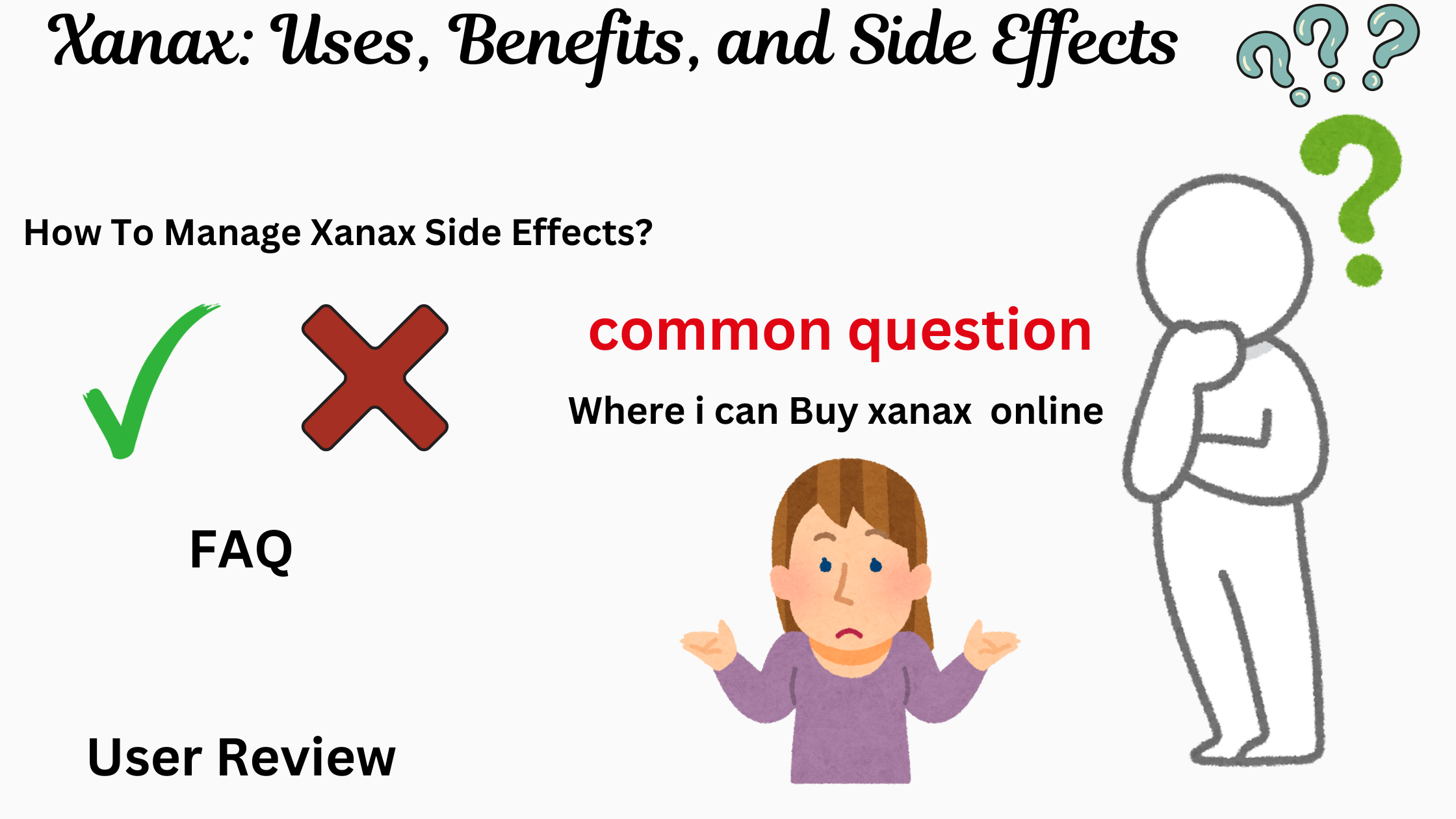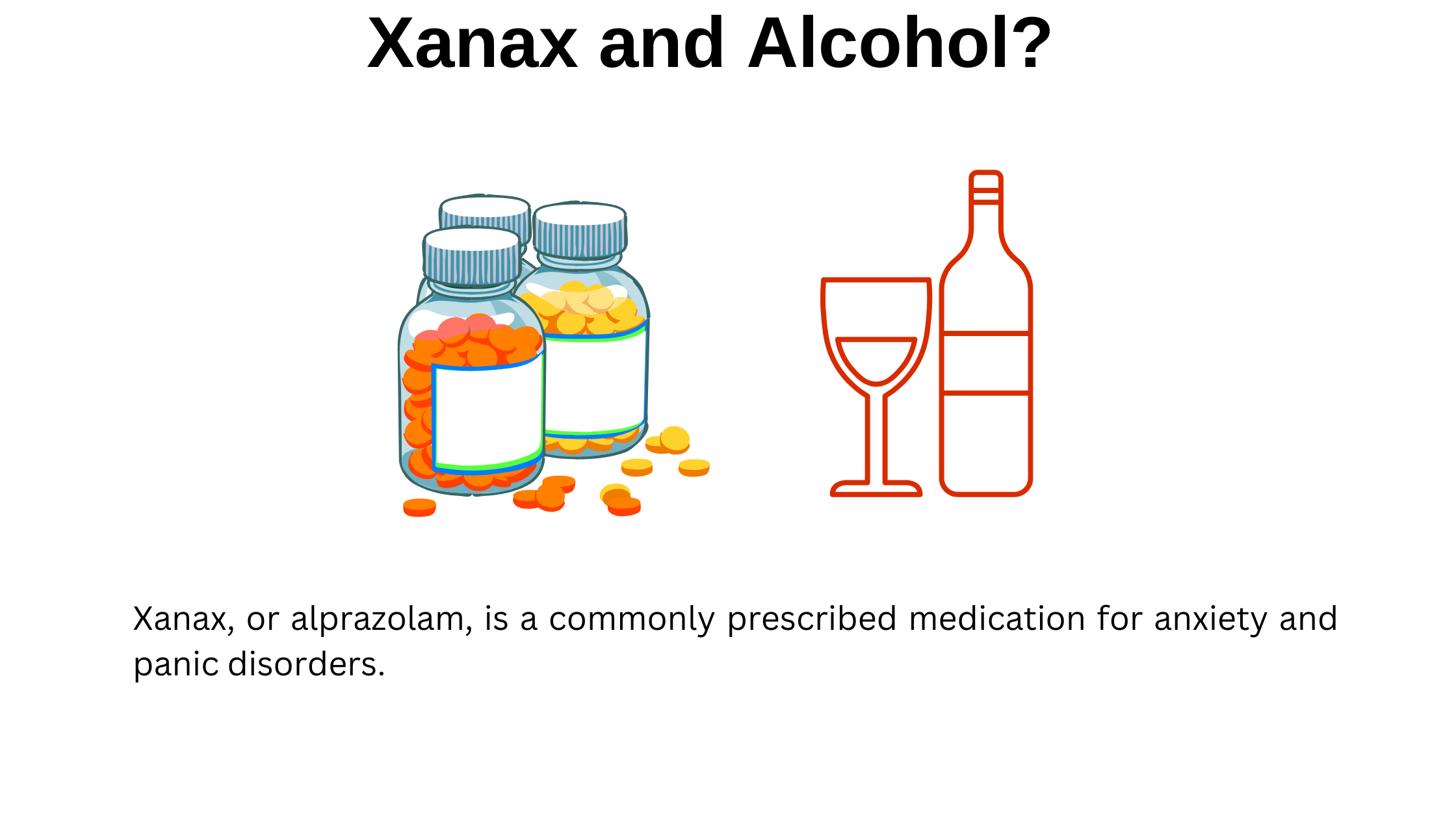Xanax: Uses, Benefits, and Side Effects

Xanax, known generically as alprazolam, is a prescription medication commonly used to treat anxiety disorders and panic attacks. It belongs to the benzodiazepine family, a class of drugs that act on the brain and nerves (central nervous system) to produce a calming effect. Xanax works by enhancing the effects of a natural chemical called gamma-aminobutyric acid (GABA) in the body, which helps reduce anxiety and panic symptoms.
What is Xanax?
Xanax is a fast-acting medication primarily prescribed for managing anxiety and panic disorders. It is known for providing quick relief, often within 30 minutes to an hour of intake. The drug binds to specific receptors in the brain, increasing GABA’s effectiveness, which helps to calm down overstimulated nerve activity that causes anxiety and stress. Due to its rapid onset, Xanax is highly effective for those needing immediate relief from acute anxiety episodes, though it is generally used for short-term management.
Forms and Dosage
Xanax is available in multiple forms, including immediate-release tablets, extended-release tablets, and liquid. The dosage of Xanax depends on factors such as the patient's medical history, age, the severity of the condition, and how they respond to the treatment. Commonly prescribed doses include 0.25 mg, 0.5 mg, 1 mg, and 2 mg tablets, with higher doses reserved for severe cases and specific disorders.
Common Uses of Xanax
1. Anxiety Disorders
Xanax is highly effective in treating generalized anxiety disorder (GAD). GAD is characterized by excessive, uncontrollable worry that affects daily life. Symptoms of GAD may include restlessness, fatigue, difficulty concentrating, and irritability. Xanax can help alleviate these symptoms quickly by calming the overactive nerves, making it easier for patients to focus on daily tasks without constant worry.
2. Panic Disorders
Panic disorder is another common condition treated with Xanax. Panic disorder involves sudden and repeated episodes of intense fear, often accompanied by physical symptoms like heart palpitations, sweating, trembling, and shortness of breath. The quick action of Xanax makes it ideal for addressing panic attacks, as it can alleviate symptoms almost immediately, providing a sense of control to the patient.
3. Insomnia (Off-label)
While not primarily prescribed for sleep, Xanax is sometimes used off-label to treat insomnia due to its sedative effects. People with anxiety-induced insomnia may find Xanax helpful, as it promotes relaxation and helps them fall asleep more easily. However, due to its potential for dependence, it is not typically recommended as a long-term solution for sleep issues.
Benefits of Xanax
The benefits of Xanax are well-documented, especially in providing quick relief from anxiety and panic symptoms. Some key benefits include:
Fast-acting relief: Xanax can reduce anxiety and panic symptoms within 30 minutes, making it an effective option for sudden anxiety or panic attacks.
Eases physical symptoms: By calming the nervous system, Xanax helps alleviate physical symptoms associated with anxiety, such as muscle tension and digestive discomfort.
Short-term management: For people experiencing situational anxiety, Xanax offers an effective way to handle acute episodes, such as those related to work stress, public speaking, or significant life events.
Potential Side Effects of Xanax
As effective as Xanax is, it is essential to be aware of its potential side effects, as some can significantly impact daily life.
1. Drowsiness and Fatigue
Drowsiness is one of the most common side effects of Xanax, as it slows down the nervous system. Some people may feel excessively tired or experience a lack of energy, especially during the first few days of use. Avoiding activities like driving or operating heavy machinery is essential until you know how the drug affects you.
2. Memory Problems
One of the more concerning side effects of Xanax is its impact on memory. Some users may experience short-term memory loss, which can affect their ability to recall recent events. This effect typically subsides once the medication is discontinued, but it's important to monitor cognitive function while taking Xanax.
3. Coordination Issues
Xanax can affect motor skills and coordination, making it challenging to maintain balance or perform tasks requiring precision. This side effect can be particularly concerning for older adults, who may be at increased risk of falls.
4. Mood Changes
Some individuals may experience mood swings or behavioral changes, such as irritability or aggression, especially at higher doses or with prolonged use. If these symptoms arise, it’s crucial to consult a healthcare provider.
5. Dependence and Withdrawal
Xanax has a high potential for dependence and addiction. Prolonged use can lead to tolerance, where higher doses are required to achieve the same effect. Withdrawal symptoms can be severe and may include headaches, tremors, seizures, and rebound anxiety.
Highlighted Advice: If prescribed Xanax, strictly follow your healthcare provider’s guidance to minimize the risk of dependency and withdrawal. Never abruptly stop taking Xanax without medical supervision.
How To Manage Xanax Side Effects?
Xanax’s effectiveness for anxiety and panic relief comes with potential side effects, but there are ways to manage them. One approach for how to manage Xanax side effects is to strictly adhere to the prescribed dosage and avoid self-adjusting your dose. Higher doses increase the chances of experiencing issues like drowsiness and coordination problems. It’s also essential to avoid alcohol, as it can amplify Xanax’s sedative effects, leading to excessive drowsiness or dizziness. Staying hydrated can ease side effects like dry mouth and fatigue, while limiting Xanax use to short-term periods helps reduce dependency risks. Regular check-ups with your healthcare provider allow them to monitor your response to the medication, adjust doses if necessary, and suggest alternatives if severe side effects occur. This proactive management can help you get the benefits of Xanax while minimizing unwanted effects.
For those experiencing severe side effects, it may be helpful to discuss alternatives or additional support with a healthcare provider. In some cases, switching to a different anti-anxiety medication may be an option, especially if side effects are intolerable or if there is a concern about dependence.
Conclusion
Xanax is a powerful medication that offers rapid relief from anxiety and panic symptoms, making it a valuable tool for those dealing with these conditions. However, its potential for side effects, particularly drowsiness, memory issues, and dependence, means that careful management is crucial. Always work closely with your healthcare provider to ensure that Xanax is used safely and effectively. Taking proactive steps to manage side effects can help maintain a balance between relief from anxiety and overall well-being.
For those looking to buy Xanax 1mg USA, or find options for Xanax online USA, it’s important to understand its potential side effects. Whether you’re considering Xanax over the counter in the USA, or checking Xanax price in the USA, knowing the side effects helps make an informed decision. The Xanax 2mg in the USA should always be used as prescribed to manage anxiety safely and effectively.
User Review
Jessica, 34, New York, USA
Xanax has been a lifesaver for managing my panic attacks. I had a lot of initial anxiety about taking medication, but after talking to my doctor and learning how to manage Xanax side effects, I felt more confident. The effects are quick, which really helps in urgent situations, though I’m careful about using it only when absolutely necessary. Overall, Xanax has been effective, and working closely with my doctor has helped me avoid most side effects.
FAQ
Q1: Is Xanax safe to use for long-term treatment?
A: Xanax is typically recommended for short-term use due to its potential for dependence. Long-term use should be closely monitored by a healthcare provider to minimize risks.
Q2: How long does it take for Xanax to start working?
A: Xanax generally begins to take effect within 30 minutes to an hour, making it a fast-acting option for managing acute anxiety or panic attacks.
Q3: Can I drive after taking Xanax?
A: It’s generally advised to avoid driving or operating machinery until you know how Xanax affects you, as it can cause drowsiness and impair coordination.
Q4: What should I do if I miss a dose?
A: If you miss a dose, take it as soon as you remember unless it’s close to your next scheduled dose. Never double up on doses.
Q5: Is there a way to manage Xanax side effects naturally?
A: Yes, following your prescribed dosage, staying hydrated, and avoiding alcohol can help reduce side effects. Additionally, check in with your doctor if you experience significant discomfort.
Note: IndiBlogHub features both user-submitted and editorial content. We do not verify third-party contributions. Read our Disclaimer and Privacy Policyfor details.







